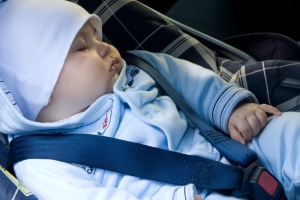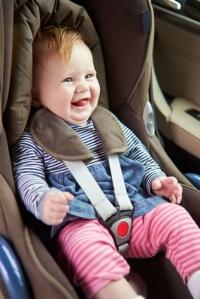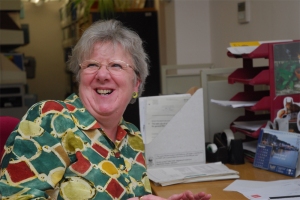The impending visit of my brother’s family – including one child aged 22 months and the other 34 months – gave me the opportunity to learn the modern ins and outs of choosing the right seat. Our visitors were coming by train and already had enough to carry…..
 It’s been 28 years since our first son was born in Canada, where the quality of the car seat was inspected by the hospital staff before I was allowed to drive him home – a practice now more widespread in the UK. But that child car seat had sustained him all the way through to the point where he had traded up to a booster, so his newly arrived brother could take over the forward/backward facing, reclining and multi-adjustable hot seat. One child car seat and one booster seat spanned two children throughout their growth period.
It’s been 28 years since our first son was born in Canada, where the quality of the car seat was inspected by the hospital staff before I was allowed to drive him home – a practice now more widespread in the UK. But that child car seat had sustained him all the way through to the point where he had traded up to a booster, so his newly arrived brother could take over the forward/backward facing, reclining and multi-adjustable hot seat. One child car seat and one booster seat spanned two children throughout their growth period.
But in 2015, returning to the subject, I found it had moved forward a long way in design and technology and I’m sure that there are many others like me, including new grandparents, who are having to learn the ropes all over again. My first point of call was the RoSPA Infocentre (free advice to members of the public on 0121 248 2130), where Anita Plumb neatly narrowed down the options to three weights I needed to consider:
• Up to 13kg – rear facing
• 9-18kg – front facing or a combination seat that starts rearward-facing and then becomes forward-facing (better to keep children rear-facing as long as possible)
• 15kg upwards – high-backed booster seats and then, if necessary a booster cushion, but again much better to use a high-backed booster seat rather than a booster cushionn.
And these weight bands certainly were a help when I started to look into the details more fully e.g. on our own website www.childcarseats.org.uk/types-of-seat/ and www.childcarseats.org.uk/choosing-using/buying-child-car-seats-checklist/ where the full and glorious complexity of it all starts to come out. Here, to be precise, you will find up to 10 categories, which give all the weight/age permutations. It certainly isn’t easy to work out the options, so here’s my thinking:
- With a baby up to 13kg, you need a baby car seat (rearward facing) in category 0+ or a 0+ and 1 combination seat that converts from rearward to forward facing, or i-size , which is based on the child’s age and height.
- After that, with a toddler or young child up to 36kg, you need to move up in size. The best option is a Group 1-2-3 adjustable seat, which will cover all of those initial years of growth, right up to the age of 12.
- There are many other combinations (all subject to using the same car – see below) but this seems to be the simplest and most inexpensive sequence. Once the child is either 135cm tall or aged 12 years, they can use the adult seat belt, although if possible keep them in the booster seat until they are 150 cm tall.
So having decided that I needed Group 1-2-3 seats for my niece and nephew, I set off for Halfords in Shirley, pretty much as a mystery shopper, since RoSPA accredits Halfords’ car seat fitter training, and I wanted to experience what this meant first-hand.
 The first issue encountered was that although I had ordered two Halfords own-brand car seats online, that didn’t mean job done. CJ Ahmed, the fitter, explained that he first had to check that they fitted properly (the mind-boggling combinations of cars and car seats make this an imprecise art). So in my brand new Volvo V60, although it had the finest reputation for safety, these seats turned out to be unsuitable. The basic range seats (not Isofix) wouldn’t fit firmly and CJ showed me just how much play was involved. A sudden impact would whip the child forwards or sideways – we needed something much more solid, attached securely to the car with the seat belt.
The first issue encountered was that although I had ordered two Halfords own-brand car seats online, that didn’t mean job done. CJ Ahmed, the fitter, explained that he first had to check that they fitted properly (the mind-boggling combinations of cars and car seats make this an imprecise art). So in my brand new Volvo V60, although it had the finest reputation for safety, these seats turned out to be unsuitable. The basic range seats (not Isofix) wouldn’t fit firmly and CJ showed me just how much play was involved. A sudden impact would whip the child forwards or sideways – we needed something much more solid, attached securely to the car with the seat belt.
So we started to move up the scale of seats and this involved moving up the price range too. We stopped when we had sourced a seat which was rock solid. CJ taught me to climb in, kneel on the seat and apply maximum pressure on the belt to get the tightest fit, and the design of this seat, with a clip to hold the belt in place, really did the job. As you go up the range, the adjustability, reclinability and comfort of the seats also improves and these are all important considerations if you’re going on a long journey. And having started at £35 for the basic range seat, we had actually reached £100 each by the time we found what was needed! Whether the less expensive car seat will fit your car seems more a matter of luck and you can see immediately why folks might baulk at this and try to pressurise the staff to fit something cheaper. But CJ was wedded to quality, certainly not for any commercial motive, and that was admirable.
The story wasn’t over yet. Unfortunately, there was only one such seat in stock but CJ, realising that I was on a tight timeframe, offered to drive over to another store in his own time and pick up a second one, to be installed in the morning. This was conduct well above and beyond the call of duty – I was truly impressed.
Talking to Halfords’ staff, I heard some pretty hair-raising stories of customers trying to cut corners – the couple who tried to buy a basic Group 1-2-3 seat for their baby; the people who insisted on buying seats which Halfords would not fit because they were too loose; the couple who argued about trying to fit their baby’s seat forward-facing in the front. I also learnt that at a recent customer advice event at the store, 80 per cent of car seats checked by the fitters turned out to be incorrectly fitted. Having learnt how to do it properly, from an expert, I can believe it.
This was an illuminating experience for me, and I had no hesitation in writing to Halfords’ CEO to commend CJ. My concern is that complexity and cost could conspire to encourage people to cut corners. The truth is that a good quality modern standard new seat (and we wouldn’t recommend a second-hand seat unless it’s from family or a friend you’re willing to trust your child’s life to) costs no more than a tank of fuel.
The weekend passed off fabulously and both children found their seats so comfortable, they fell asleep at the wrong times – I got into trouble a bit for that. But when you see them sleeping there in their innocence, you know that investing in quality for their safety and future happiness is a price well worth paying.
_______
 1 The new EU i-size standard is not based on the child’s weight, but requires children to be kept rearward-facing until they are at least 15 months old. They fit into the Isofix points that were built into the car when it was manufactured; see www.childcarseats.org.uk/types-of-seat/i-size-seats/
1 The new EU i-size standard is not based on the child’s weight, but requires children to be kept rearward-facing until they are at least 15 months old. They fit into the Isofix points that were built into the car when it was manufactured; see www.childcarseats.org.uk/types-of-seat/i-size-seats/
Tom Mullarkey, chief executive
